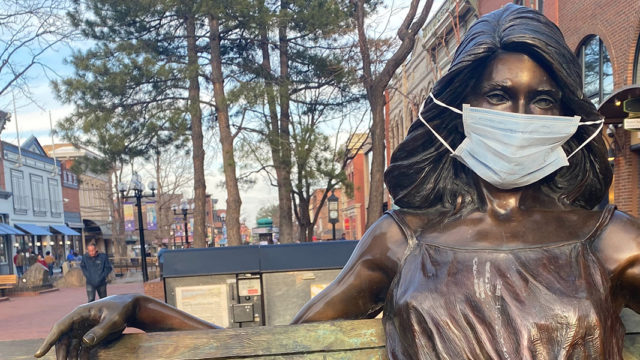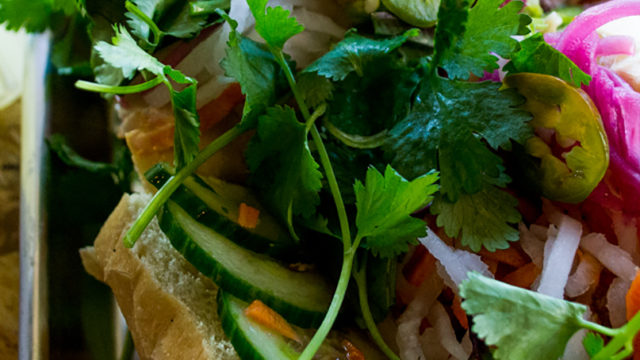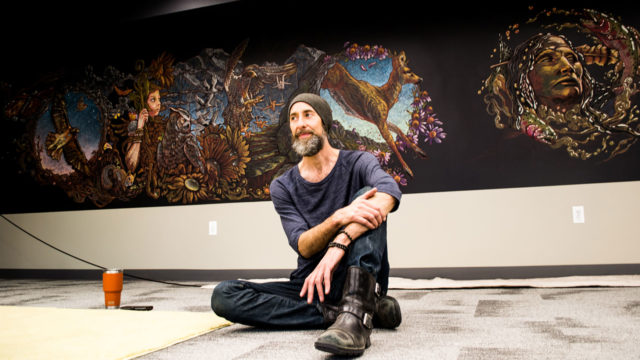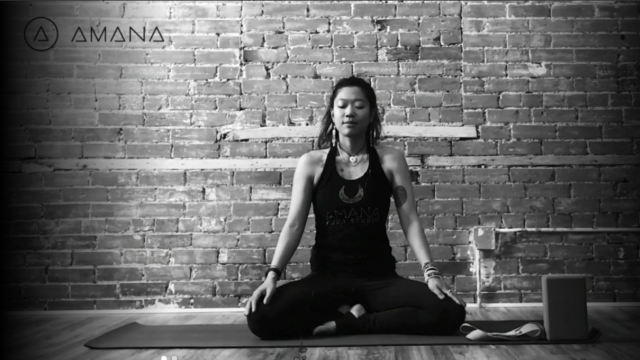At almost five weeks into stay-at-home quarantine madness, we all feel pent up. Getting outside is tricky, somewhat scary and maybe not illegal but feels like it. We’re on our seventh bag of chips and salsa, and the touch-of-lime tortilla tastes noticeably different than it did three weeks ago — a tad less uplifiting.
Many of our beloved gyms and movement spaces have pivoted to online classes. Amana Yoga began offering subscription classes, Boulder Movement Collective has punch-card, drop-in or membership class passes for its virtual lessons, and local martial art academy Easton Training Center has launched a whole free online curriculum called the “Easton at Home Hub.”
Boulder and stay-at-home conflict about as much as two ideas can. With over 45,000 acres of open space, Boulder’s Open Space and Mountain Parks department manages a 154-mile trail system with 37 trailheads and 54 miles of multi-use paths. In addition to the outdoors, Boulder has over 120 gyms, training academies and movement schools and over 30 dance studios.
If you’ve ever belonged to a Boulder movement community, you know. It’s safe to say, many people call these spaces a second home.
I resisted Zoom classes for several weeks. Live streaming to your living room was supposed to make class easier to attend, but the intimidating foreign factor made it harder for me.
However, after finally hitting a wall with my quarantine routine, and as gyms plan their reopening in the coming weeks, I decided to face my Zoom fear and do a mini tour of several local movement studios I had always wanted to try.
I booked classes with Block 1750, Samba Colorado, Crossfit Sanitas, and Easton Training Center.
Block 1750 + regulated engagement
Located at 1750 30th Street, Block 1750, a dance-based Boulder community center launched in 2014, focuses on street dance styles and hip hop culture. For my first Block class, I went with contemporary dance.
Block 1750 streams its classes both live via YouTube and also a live Zoom video chat, but I only watched from YouTube. True to form for virtual school technology, the first five minutes of class involved navigating some technical difficulties.
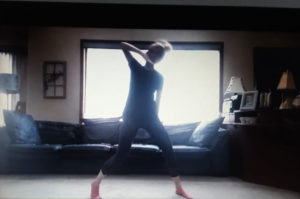
Angela, our teacher, then led us through a stretching warmup from her living room, followed by a sequence of choreography to “Rise Up” by Stella Day.
The class offered a mix of technique and an emphasis on release – feeling the music, not perfect choreography. Angela broke it all down for us really well, from body mechanics to emotion.
“At home it’s easy to be contained,” says Angela, “with not a whole lot of range of movement. But try to use these moves as a guideline to express and be free, release.”
Though quick-tempo choreography does not come easily to me and I’ve never had any formal dance training, Angela made the experience fun and accessible. Not going to lie, having the option to regulate my engagement and just watch the YouTube live, remaining a hidden participant, heightens the appeal of trying something new and potentially intimidating.
By the end, I was sweating and smiling as I spun around my carpeted at-home art studio to the sound of Stella Day. I would definitely do another Block class, and maybe next time turn on my camera.
Samba Colorado + feeling the beat
If you’ve ever stumbled into a crowd of stomping, dancing, whistle-blowing, and drumming folk in green T-shirts on Pearl Street Mall, you’ve seen Samba Colorado.
Located at 1905 15th Street, the Brazilian dance school and company, founded and directed by Kebrina Josephina De Jesus in 2013, focuses on Afro-Brazilian dance and music through a somatic and mindful approach.
Kebrina taught from her living room with space buns and a headset; about 10 people showed up, most of whom she knew by name. Kebrina welcomed newcomers with love and retained her usual class tradition of checking in with everyone throughout class.
We started by working simple Samba movements first with a focus on hips, and then from the feet, moving from traditional Samba to a more relaxed, reggae-focused street style.
It was a little hard to hear Kebrina over the music, but as virtual classes still form a new arena of teaching, testing audio represents a normal challenge for many movement facilities.
For anyone who has never experienced Samba! Three key takeaways: LOTS of cardio, lots of calve work, and lots of hips.
I did not expect the emphasis on full-body healing, sharing, and earth-focused energy. Moving back and forth on my feet, right-left-right, left-right-left, I began to ground into the earth, find breath in my hips and feel energy blossom from my root and spread to my fingertips.
“First ground your Samba,” said Kebrina, “then you can travel with it … Your feet in the Earth, the drums in your hips, everyone moving to the same pulse.”

I rate this one 10/10; I will return.
Crossfit Sanitas + active engagement
Originally begun as a space to break the intimidating stigma of crossfit and create a place where women could feel comfortable training, Eric and Melissa Roza opened Crossfit Sanitas’ 10,000 square-foot gym in 2013 at 2525 Arapahoe Avenue.
The gym emphasizes strength and endurance but also offers yoga and mobility classes and access to physical therapy, massage, acupuncture, a cold plunge pool, and even nutritional counseling.
Owner Melissa also writes a blog with posts like “Best Places to Hike and Workout Outside Around Boulder” and features from guest writers like their resident PT, Doctor Haas such as “Quick Tips from the PT to Manage that Stress.”
Currently, with its doors shut through Covid-19, Crossfit Sanitas offers free Zoom classes at noon on Monday, Wednesday and Friday. I tuned into the Friday’s class with Coach Dwight this past week, joining as one of seven.
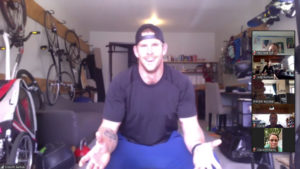
With a focus on conditioning and strength, Coach Dwight taught from his converted garage studio and offered substitutions such as a heavy backpack filled with books if people didn’t have kettlebells or dumbbells.
We went from AMRAP (as many rounds as possible) sequences within a set amount of time consisting of cardio, lifting, and pull (or push) ups.
I tend to fall into the same sequences and get bored easily with my usual workouts. Doing HIIT-focused exercise in a virtual group provides accountability; I can’t just walk off to my kitchen and get a cookie. Some moves, like hand-stand pushups (against a wall, don’t worry) and even down-dog pushups worked muscles I never use, and gave me a whole set of ideas to integrate into my daily workouts.
For my first crossfit experience, I was pleasantly surprised. And like with the others, doing a class virtually helped ease some of that first-time discomfort.
Easton Training Center + at-home Jiu Jitsu
Located at 2005 32nd Street, Easton Training Center got its start in 1998 when Amal Easton founded the school shortly after his return from training with the renowned Gracie family in Brazil.
It focuses on two close contact sports: the ground-based grappling sport of Brazilian Jiu Jitsu and the standing + striking sport of Muay Thai.
I had never tried either class before I began working part-time at the academy, and after several months of resistance, I took a liking to Jiu Jitsu. I trained with Easton for about seven months. However, when Easton shut its doors on March 13, I completely stopped training. I knew Easton had very quickly pivoted its entire curriculum to virtual Zoom classes, but I couldn’t image class being the same.

Then last week, one of my favorite teachers, Paige, the one who first really got me on the mat, announced she would start teaching Fundamentals two days a week, no partner required.
I persuaded my husband to join me, but anyone practicing alone can also use a towel dummy (which they show you how to make.)
Bowing in from our bedroom in our gis and belts with all the furniture pushed back felt like a surreal experience.
As Jiu Jitsu is a partner-based, technical sport, we had to watch the demos even more carefully through the screen. Where do you put the left hand? What does the right arm do? Is your left knee high enough by your partner’s head? Is your sternum over theirs so they can’t roll you over?
With so many details, Jiu Jitsu requires a lot of personal attention, with the coach circulating the room correcting form. It would seem impossible for the coach to have the same thoroughness through a screen, but I stood corrected.
Easton films all of their virtual classes from its home studio in Boulder and uses a big TV screen for the coaches to view the students through. Paige always provides excellent verbal cues, and it turns out her specificity is actually very conducive to virtual classes. She frequently spoke directly to students to guide them through individually, and reminded people to tilt their screens so she could see them.
Virtual movement
Overall, through the experience I found that virtual classes are really not so different than attending in person. They provide a buffer for those not totally comfortable with something new, with a regulated level of engagement.
With Covid’s freeze taking a toll on fitness facilities that may not open back to full capacity until fall as they gradually work back up to speed as safely as possible, it looks like Zoom classes are here to stay. Some schools, like Easton, even plan on permanently working Zoom into their curriculum.
Technical difficulties represent a challenge as companies test new features, but even those behind-the-scenes moments added to the human-ness of the experience. While initially I did not particularly like feeling like a digital cell with my face on the screen, after I got used to the Zoom format it became kind of cool to see everyone in their natural spaces.
I will definitely continue to take virtual classes even after this wave passes. People frequently miss out on the benefits of various movement classes because of the fear of walking through the door, or fear of being the “outsider” to a new community.
Virtual movement provides a way to explore new things in a comfortable environment so that you can fall in love and connect with the movement first and foremost. From there, connecting to others through that shared love becomes second nature.
Like Easton’s president said in the academy’s live all-hands staff meeting last week, “It’s because of these coach’s incredible obsession with their sport, and with the people, that these classes keep working.”
And joining these various classes as [mostly] an outsider showed me how much of a movement community Boulder really has and how many people support it, and why it’s so important to keep moving.


